Turn-key web subsidy assurance platform development
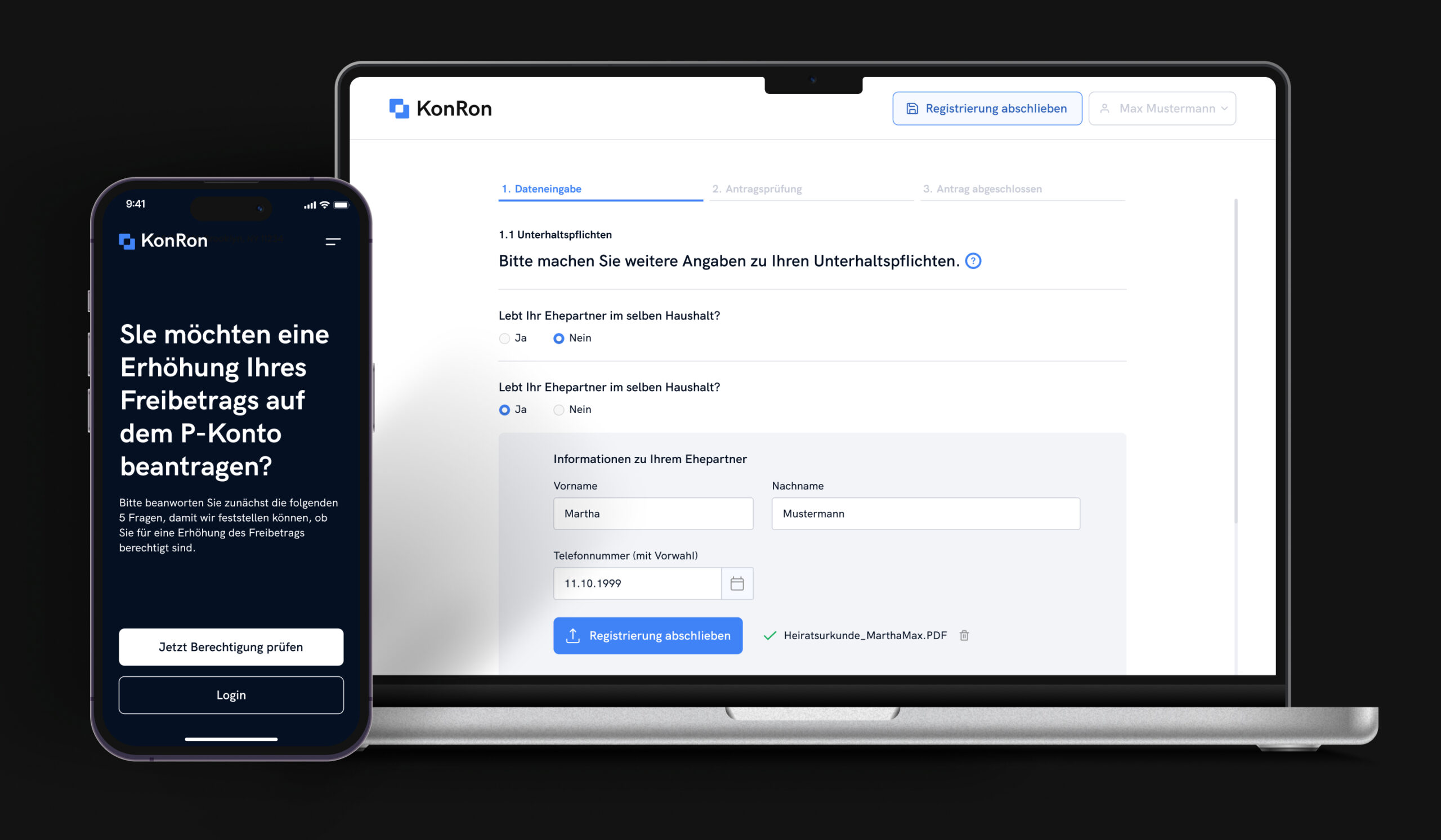
The UMIND team built a web Subsidy Assurance Platform at the request of our regular customer, with whom we had worked on a row of other successful projects.
Request
Amid the increasing number of people with payment problems or over-indebtedness, the web app was intended to enable a simple and free solution to increase the allowance on seizure protection accounts.
If an account is seized, it is blocked for one month. During this time, the account holder can convert it into a seizure protection account, which will ensure legal protection. It was necessary to build a platform that would make it easy for users to independently provide the necessary information, upload documents, and receive a preview of the possible allowance before sending it. The application would be further forwarded directly to the relevant office, processed, and certified as positive or negative. The digital certificates would be transmitted in the system.
Initially, it was planned to launch the platform only in one region where the maximum number of users would be 570,000, with an estimated daily user load of around 1,500. However, the goal is to roll it out for the entire Germany, which means that the solution needs to be scalable and performative.
The platform should be easy to use and highly secure as it was expected to deal with huge volumes of users’ sensitive data.
Our task was to enrich the platform with a reliable document management system and functionality for real-time data processing.
We needed to build the solution fully from scratch.
Project description
When the company contacted us they already had a good understanding of our expertise and the quality of solutions that we could deliver. That’s why they knew that we could take full responsibility for the project realization.
The digital agency provided us with the assignments and detailed requirements. Project planning, preparation, and all other related tasks were performed by us. The range of our responsibilities also covered the full cycle of software development, including product testing and release.
The Subsidy Assurance Platform was expected to offer users the required functionality for applying for a subsidy in case they comply with the criteria set by the relevant authorities.
The realization of such a project presupposes the involvement of multiple stakeholders, such as government bodies, accredited agencies, and end-users. For us, it was very important to find the right approach to working with all their requirements and expectations to launch a platform that would efficiently serve all parties.
While building the Subsidy Assurance Platform, we greatly focused on the security, scalability, and user-friendliness of this solution.
As for UI/UX design, it was crucial to take into account the existing international inclusivity standards to make sure that every user, including people with disabilities, will be able to get access to the functionality of the platform.
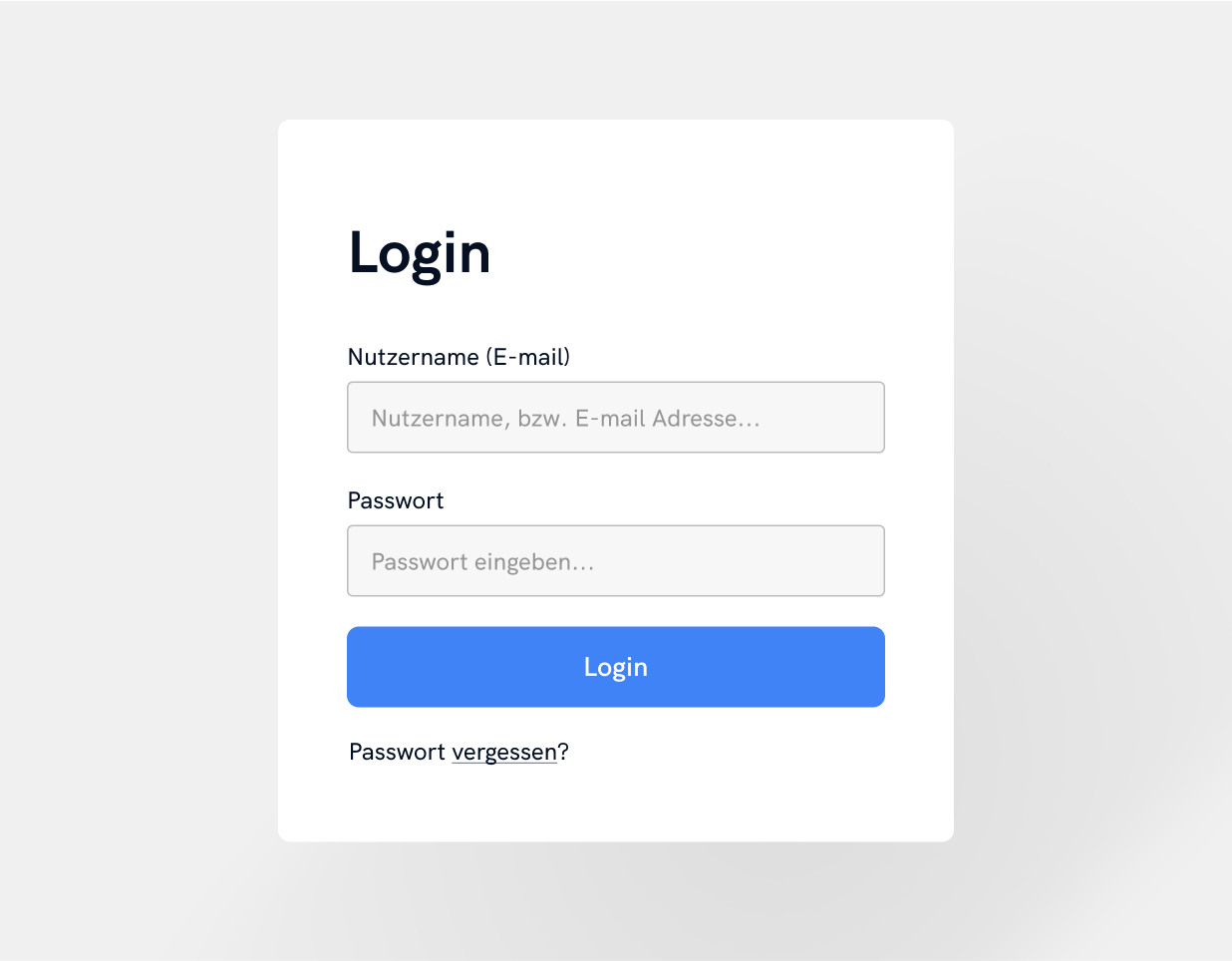
Our approach
On the 5th day, we had a prepared list of questions for the call with the client. It was organized to discuss the details and provide project estimates. Based on this analysis, we offered the most appropriate tech stack, planned the development process, assembled the team, and set the deadlines.
Our estimates also included the design phase. However, later, it was discovered the design would be quite generic. And it would be possible to use a lot of ready-made blocks. That’s why we understood that it would be fair to reduce the number of hours that were initially allocated for this step. Before we proceed to the active development phase, our DevOps specialist set up the environment. For project coordination, we used Jira and relied on 2-week sprint planning and demos. 4 developers worked on the project for 5 months.
Before proceeding to the development of a full-scale platform, our team built an MVP with a basic set of features that included:
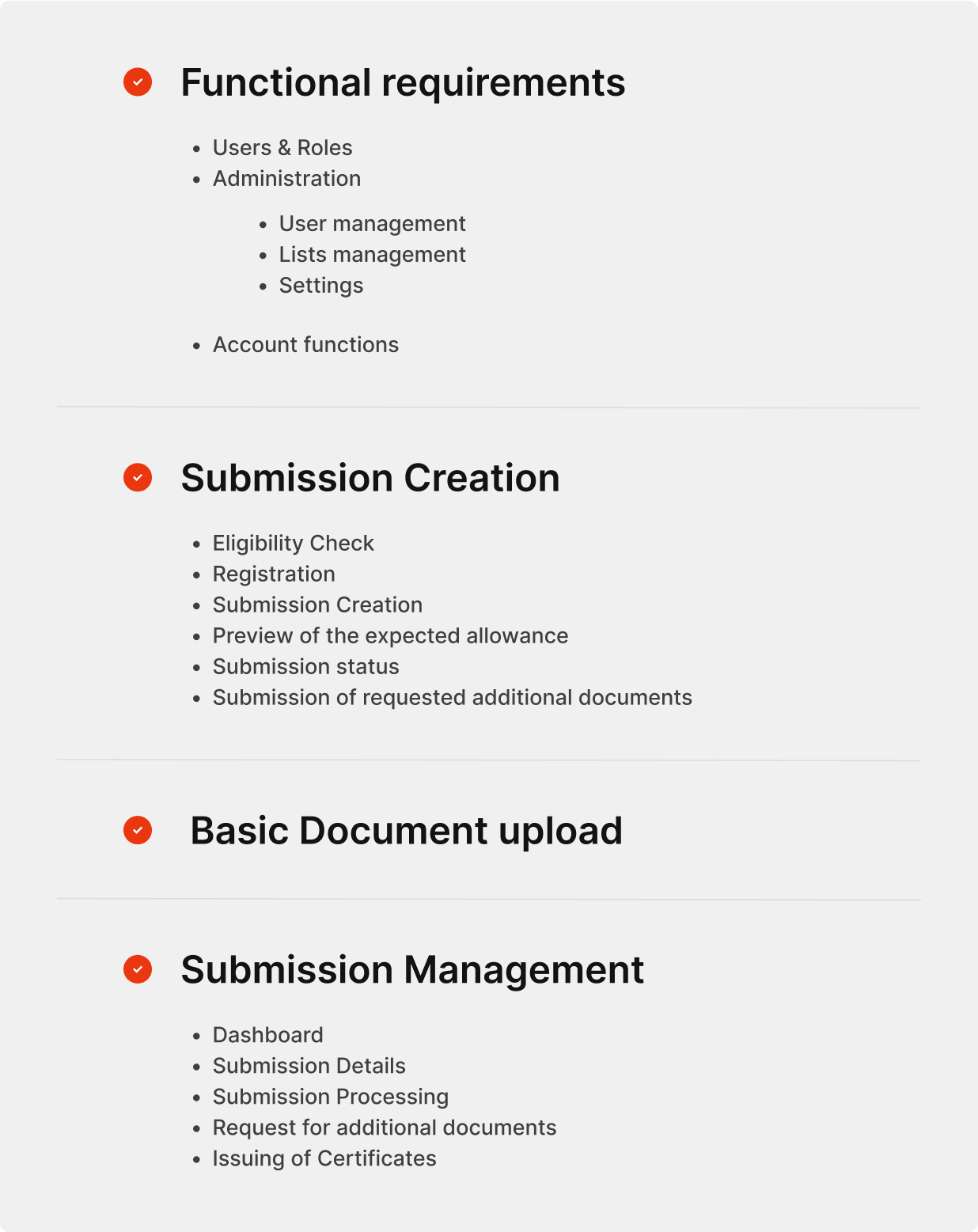
The final version of the product was further enhanced with other planned features, including e-mail notifications, document upload with QR functionality, multi-language support, data export, and allocation of submissions to the relevant bodies.
The communication with the final client was organized via the digital agency’s project manager but mainly it took place already at the stage of software delivery.
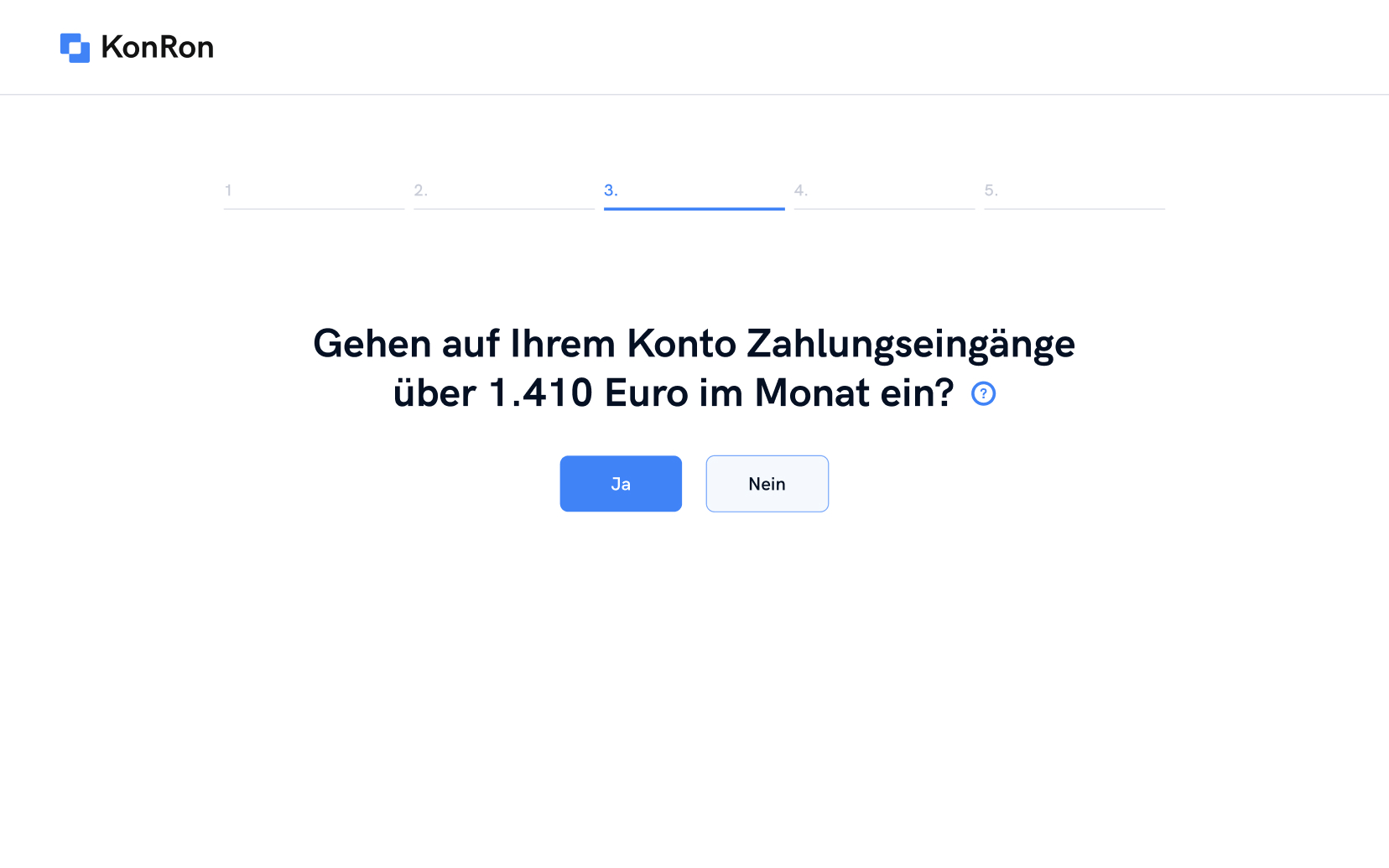
Key features
A visitor becomes a submitter by providing some basic personal details. After the registration form is filled out and submitted, a user will receive an email with a four-digit code to confirm the registration. After successfully inputting the code, a user will see some tips on how to go through the submission process.
Users are guided through the submission step by step. They can save the current input and continue later. It is also possible to move forward and backward between questions. While users are adding information, the system conducts plausibility checks and displays error messages if required. After sending their submissions, users receive a confirmation in the system as well as an email with a brief summary of their submissions.
Once a submission is handed in by a submitter, it will be allocated to recognized bodies based on certain rules. At the moment, the rule is quite simple. Submissions will be assigned based on the submitters’ ZIP code. Nevertheless, it is likely that in the future it will be necessary to implement more sophisticated rules. That’s why while building this functionality our team provided the possibility to introduce the changes easily.
An employee of a recognized body needs to decide on whether to issue a protection account certificate. This user needs to choose between two options (positive or negative) in the system. The system will generate a relevant certificate that will be already pre-filled based on the submission data. The document will be further printed out, signed and stamped, and then scanned and uploaded as a PDF to the system again.
In the governmental and financial sectors, data protection is vital. That’s why we paid special attention to this aspect. We introduced robust encryption, and secure data storage solutions, and made sure that the platform is fully GDPR-compliant.
Results
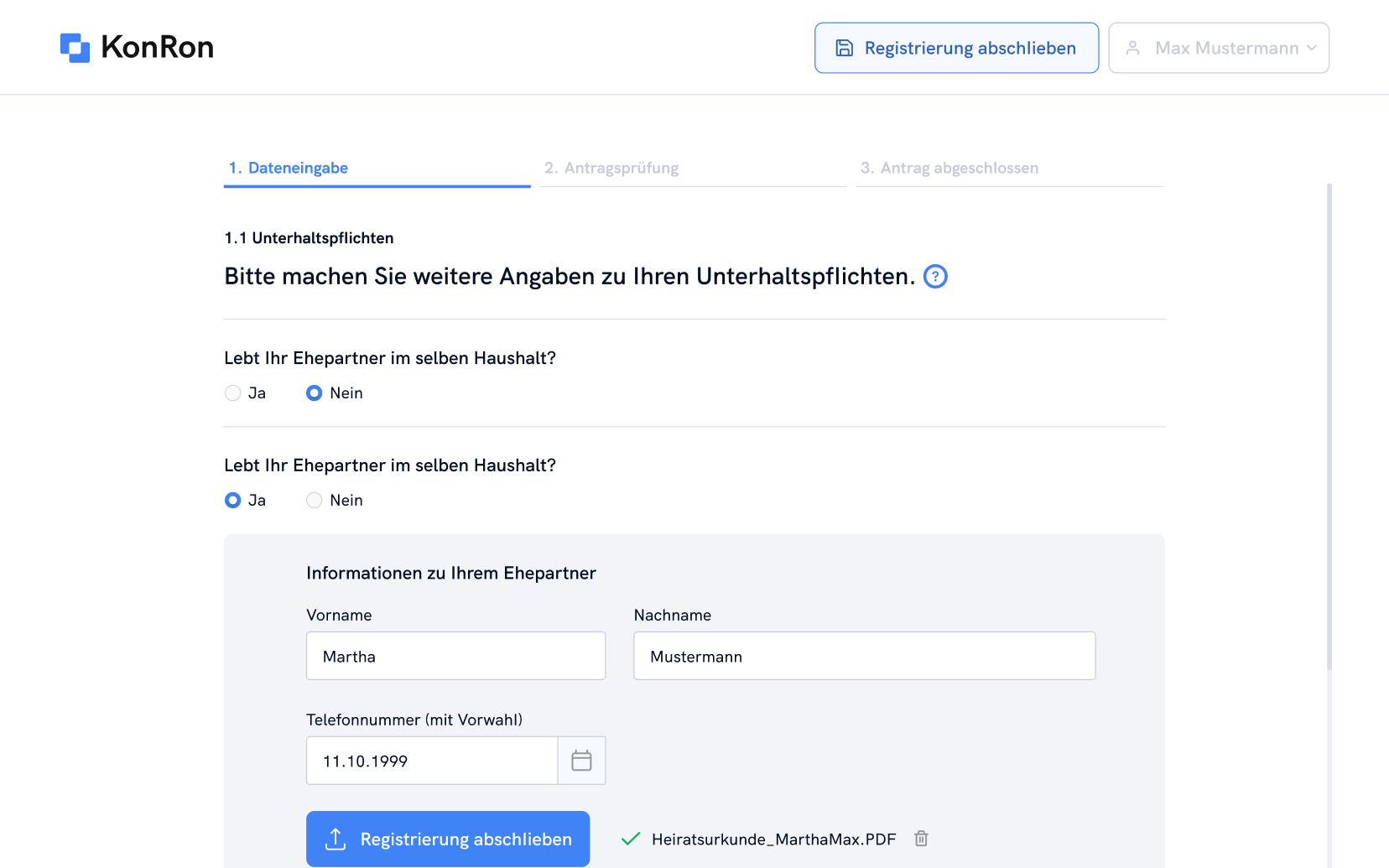

/Founder rio nord GmbH
